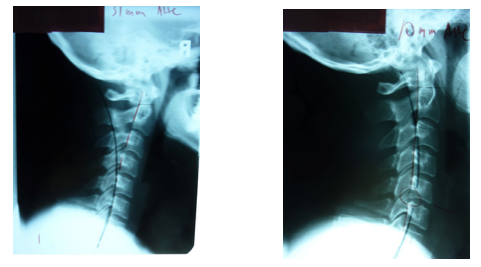It’s never too late to get up and get active.
But it can be too late to do something about the state of your spinal health.
It’s unfortunate when we’re out in public and see people with mobility issues, chronic pain, and poor posture that are obviously due to degeneration of the spine and discs.
Take early morning at a local mall, where we often see seniors, who are part of a walking group, making their rounds. Canes, walkers, and other mobility aids are the most visible signs of chronic issues that, in the majority of cases, could have been prevented had better care been taken of the spine and body as a whole.
Other health disciplines have done an outstanding job of instilling the need for regular preventative care. Dentistry is the perfect example: Brush twice a day. Floss. Get regular checkups and cleanings.
For most people, it’s conditioned behaviour, thanks to effective public education.
But somehow, Chiropractic still struggles to achieve a comparable level of awareness about spinal health and the preventative care that it requires.
But the facts can’t be denied. They’re plain to see on hundreds of our patients’ x-rays, and in their personal stories.
A misaligned spine leads to degeneration that erodes quality of life. We divide this degeneration into four stages. Correction and recovery, even full recovery, is possible in the first two stages. Partial recovery is possible in the third. Beyond that, the damage is generally irreversible. The best we can do is relieve pain and restore some mobility.
That means early intervention is key.
Why? Your spine (and your neck) takes a beating from normal everyday activities. Rough sports, prolonged periods of sitting, and hunching over a keyboard or mobile device all take their toll. Many of the contributing factors to poor spinal health are subtle and cumulative.
This means that, just like getting your teeth regularly cleaned of plaque build up that contributes to tooth decay and gum disease, your spine needs regular maintenance.
The proof is in the pictures
Take this patient, a 30-something woman. She came to us complaining of lower back pain, daily headaches, and asthma. In the first x-ray, we see a reversal of the cervical curve in the neck, which has led to a 31-mm anterior carriage, or forward tilt, of her head. (The green line represents an optimal curvature of the neck.)
This puts a tremendous amount of pressure on the spinal cord as well as the joints of the spine. There are also early signs of arthritis as a result of the loss of curvature.
After six months of corrective care, this lady reported she felt 80 to 90% better, her low back pain was almost gone, and her headaches had decreased to two or three times per week. After 12 months, she reported a 100% improvement, with no more lower back pain or headaches, and she no longer required an inhaler for asthma.
As you can see on her latest x-ray, her curve is not yet perfect, but the reversal is now gone. This is a great example of how health can be restored to the body by removing pressure on the nervous system.

The next pair of X-rays comes from a 72-year-old man. He came to our clinic with lower back pain that radiated into his buttocks, as well as digestive problems that required the use of a medication called Prevacid. His back pain was so severe he couldn’t stand upright.
In the first x-ray, you can see a substantial anterior carriage, or forward tilt, of his head, of 53 mm. (Again, the green line represents the optimal curve for the neck.) We considered this to be a Stage 3 deterioration, versus an irreversible Stage 4, because we were able to improve his situation.
After 12 months of corrective care, he reported full relief from his lower back pain and had regained mobility, though he remained troubled with digestive issues. As you can see on the second x-ray at 18 months, his anterior carriage had been reduced by 30 mm.

The verdict?
Life is tough on your spine. We’re here to help. That’s what Chiropractic is all about.
The profession of Chiropractic, like other healthcare disciplines, has evolved over the years. While Chiropractic traces its roots back to the 1890s, we subscribe to a technique that was pioneered in the 1970s by Dr. Donald D. Harrison called Chiropractic BioPhysics (CBP).
CBP is a modern and rigorously scientific Chiropractic technique that corrects and restores your spine back to alignment. The emphasis is on treating the underlying cause of your complaint, rather than on short-term relief from pain.
More than 150 clinical trials and research studies conducted over the past four decades prove CBP produces results.
At Hazeldean Family Chiropractic, we see the evidence every day, in the changes we see in our patients, be they eight weeks old, or 80 years old.
Did you find this information useful?
I hope you did. Please share it with your friends. You can also follow us on Facebook, Twitter, and YouTube, where we regularly post on other health-related topics. Our website also has great information about Chiropractic care and other health-related topics, such as selecting the proper pillow for your sleeping habits.
